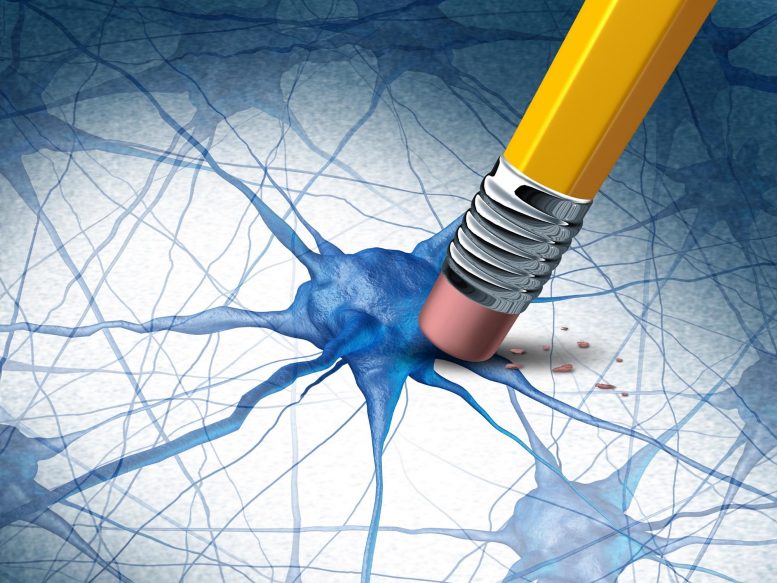
UCLA researchers suggest that a compound could improve brain electrical rhythms and potentially treat schizophrenia and depression, pending human trials.
In a recent study, UCLA Health researchers identified and synthesized a molecule that successfully restored cognitive functions in mice exhibiting Alzheimer’s disease symptoms by reactivating the brain’s memory circuitry. If this compound demonstrates similar effects in humans, it could represent a groundbreaking Alzheimer’s treatment with the unique ability to rejuvenate memory and cognition, according to the study’s authors.
“There is really nothing like this on the market or experimentally that has been shown to do this,” said study lead author Dr. Istvan Mody, a professor of neurology and physiology at UCLA Health.
The molecule, DDL-920, works differently from recent FDA-approved drugs for Alzheimer’s disease such as lecanemab and aducanumab, which remove harmful plaque that accumulates in the brains of Alzheimer’s disease patients. While removing this plaque has been shown to slow the rate of cognitive decline, it does not restore the memory and cognitive impairments.
“They leave behind a brain that is maybe plaqueless, but all the pathological alterations in the circuits and the mechanisms in the neurons are not corrected,” Mody said.
Study Details and Findings
In the study, published in the journal The Proceedings of the National Academy of Sciences, UCLA researchers led by Dr. Istvan Mody and Dr. Varghese John, professor of neurology, and director of the Drug Discovery Laboratory (DDL) at the Mary S. Easton Center for Alzheimer’s Disease Research and Care sought to find a compound that could figuratively flip the switch back on in the brain’s memory circuitry.
Similar to a traffic signal, the brain fires off electric signals at different rhythms to start and stop various functions. Gamma oscillations are some of the highest-frequency rhythms and have been shown to orchestrate brain circuits underlying cognitive processes and working memory – the type of memory used to remember a phone number. Patients with early Alzheimer’s disease symptoms such as mild cognitive impairment have been shown to have reduced gamma oscillations, Mody said.
Other studies attempted to use neuromodulation techniques to stimulate gamma oscillations to restore memory. Auditory, visual, or transcranial magnetic stimulation at a frequency of 40 Hz – similar to the frequency of a cat’s purr – worked to dissolve plaques in the brain but again did not show notable cognitive enhancements, Mody said.
In this latest study, Mody and his team sought to tackle the problem from a different perspective. If they could not jumpstart these memory circuits using external tools, perhaps there was a way to trigger these electrical rhythms from the inside using a molecule.
Specifically, they needed a compound to target certain fast-firing neurons, known as the paravalbumin interneurons, that are critical in generating gamma oscillations and therefore memory and cognitive functions. However, certain chemical receptors in these neurons that respond to the chemical messenger known as GABA work like brake pedals to reduce the gamma oscillations entrained by these neurons.
Mody, John, and their team identified the compound DDL-920 to antagonize these receptors, allowing the neurons to sustain more powerful gamma oscillations.
To test whether this would actually result in improved memory and cognition, researchers used mice that were genetically modified to have symptoms of Alzheimer’s disease.
Both these Alzheimer’s disease model mice and wild-type mice underwent baseline cognitive testing in a Barnes maze – a circular platform surrounded by visual clues and containing one escape hole. The maze is used to measure how well rodents can learn and remember the location of the escape hole.
Experimental Outcomes
After the initial tests, researchers orally administered DDL-920 to the Alzheimer’s model mice twice daily for two weeks. Following treatment, the Alzheimer’s disease model mice were able to recall the escape hole in the maze at similar rates as the wild-type mice. Additionally, the treated mice did not display any abnormal behavior, hyperactivity, or other visible side effects over the two-week period.
Mody said that while the treatment was effective in mice, much more work would be needed to determine if the treatment would be safe and effective in humans. Should it ultimately prove to be effective, the drug could have implications for treatments of other diseases and health conditions that have diminished gamma oscillations such as depression, schizophrenia, and autism spectrum disorder, Mody said.
“We are very enthusiastic about that because of the novelty and the mechanism of action that has not been tackled in the past,” Mody said.
Reference: “A therapeutic small molecule enhances γ-oscillations and improves cognition/memory in Alzheimer’s disease model mice” by Xiaofei Wei, Jesus J. Campagna, Barbara Jagodzinska, Dongwook Wi, Whitaker Cohn, Jessica T. Lee, Chunni Zhu, Christine S. Huang, László Molnár, Carolyn R. Houser, Varghese John and Istvan Mody, 6 August 2024, Proceedings of the National Academy of Sciences.
DOI: 10.1073/pnas.2400420121
1 Comment
So how can we expect mice to pay for this treatment? What kind of insurance do they have?
I’m sure this will be demonstrated to be perfectly safe and effective for humans – in about 40 years. We need to test this, to make sure it’s perfectly safe. After all, when you’re dying from Alzheimer’s, the last thing you want to some kind of an accident.